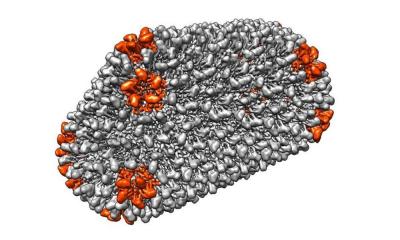Video • In development
A more accurate tool to track new HIV infections
Population-based model would benefit research and public health initiatives worldwide
Improved methods for classifying recent infection from older infections are critically needed to help identify the most effective prevention strategies
Georgia Tomaras
Researchers at the Duke Human Vaccine Institute have led an effort to develop a more accurate way to gauge the incidence of HIV infections in large populations, which will improve research and prevention strategies worldwide. The new method more correctly identifies new vs. long-standing infections – an important distinction for determining where to target public health measures and research, and for evaluating whether interventions are successful at reducing HIV transmission. “Recent advances -- including effective anti-retroviral drugs that both treat and prevent HIV infections -- have changed the landscape in the HIV field,” said senior author Georgia Tomaras, Ph.D., professor in the Department of Surgery and director of research at Duke Human Vaccine Institute. The study is published online in the journal JCI Insight. “Improved methods for classifying recent infection from older infections are critically needed to help identify the most effective prevention strategies,” Tomaras said.

Tomaras and colleagues worked to develop a way to measure HIV incidence that takes into account the unique features of the current epidemic while also capitalizing on recent insights into how the virus and the body interact during the early phases of infection. The result was an assay that identifies new combinations of naturally occurring antibody biomarkers, resulting in a promising set of four biomarkers that could be used. The new assay has a longer, and thus more accurate, time-period that constitutes recent infection, and fewer false classifications.
“Having a more accurate HIV incidence test could substantially reduce costs for researchers, because they would need a much smaller sample size to enroll in studies,” Tomaras said. “Additionally, from a public health standpoint, a more accurate HIV incidence test would help identify hot spots of recent infections, so that prevention efforts could be better targeted to where outbreaks are happening,” said Kelly Seaton, Ph.D., lead author on the study.
Source: Duke Health
22.12.2017







